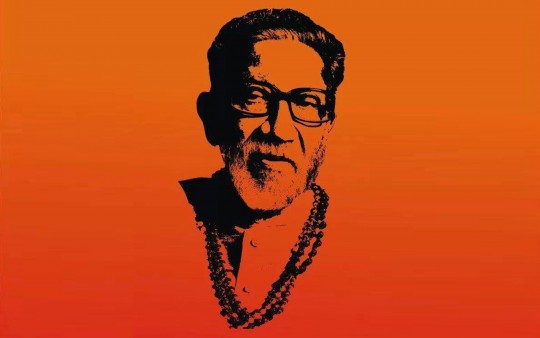On 17 November, 2012, the founder of Shiv Sena, Shri Balasaheb Thackeray took his last breath. His death marked an end of an era. He played pivotal role in shaping the politics of Maharashtra. He was the flag-bearer of Maratha pride. He exercised a significant influence in national politics as well. He is still remembered for his amazing oratory skills, vocal attitude, for being firebrand Hindu leader, and calling a spade a spade. However, before being identified as a Hindu leader, Thackeray was a cartoonist.
On his sixth death anniversary, here is a quick look back at his career from a cartoonist to one of the tallest Hindu leader of the nation, the icon of Hindutva.
Bal Keshav Thackeray was born on 23 January 1926. His father- Keshav Sitaram Thackeray- was a leading figure of the Samyutka Maharashtra movement, which advocated for the creation of a separate linguistic state for Marathi speaking people.
Bal Thackeray began his career as a cartoonist with the Free Press Journal in Mumbai. His cartoons were also published in the Sunday Edition of The Times of India. Later on, in 1960, he started his own political weekly Marmik. Through Marmik, he launched a campaign against the growing influence of non-Marathis in Mumbai. The success of Marmik inspired him to launch his own party- Shiv Sena- on 19 June, 1966 to fight for the cause of the Marathi Manoos or the Marathi common man. Saamana was launched as the party’s mouthpiece. Popularity of his party touched new heights in the next ten years. In alliance with the BJP, the party reached new heights of success, when it managed to grab the power in the state in the 1995 Assembly elections in Maharashtra. Of the 288 Assembly seats, the Shiv Sena won 73 seats, while the BJP emerged victorious on 65 seats. Manohar Joshi became the first Shiv Sainik CM of the state. Though Thackeray had undoubtedly helped secure victory for the party in elections with his strategies, he personally decided to stay out of the political limelight.
Politically, the Shiv Sena was anti-communist and wrested control of trade unions in Mumbai from the Communist Party of India (CPI). While fighting against the Communists, Shiv Sena formed strong cooperative relations with the industrialists. By the beginning of 1980s, communists lost their clout completely in Maharashtra. It was around this time that Bal Thackeray reinvented Shiv Sena into a Hindutva party. In 1980s and early 90s, Shiv Sena became a force to reckon with in Maharashtra. For the first time, it started spreading its wings outside Mumbai as well. Hindutva was also a topic of more mass appeal as compared to anti-communism or regionalism. Time and again, he proved his dedication and commitment for the cause of Hindus. After the exodus of Kashmiri pandits in 1990, Bal Thackeray immediately took notice and got seats reserved in engineering colleges across Maharashtra, for the children of Kashmiri Pandits. Balsaheb Thackeray also “banned” all India-Pakistan cricket matches to be held in Mumbai and Maharashtra.
Rise of Shiv Sena in Maharashtra coincided with rise of the BJP in the nation. In 1992, Bal Thackeray openly claimed responsibility for demolition of Babri mosque.
In 1999, he was banned from voting and contesting elections for a period of six years, after he was found guilty of demanding votes in the name of religion. In 2005, the ban was lifted, and he voted for the first time in the BMC elections. In the same year, his nephew- Raj Thackeray- left the party to form the Maharashtra Navnirman Sena.
On 17 November, 2012, Thackeray died in Mumbai as a consequence of a cardiac arrest. His death had led to the city of Mumbai being shut; all the shops and commercial establishments were immediately closed as soon as news of his death broke out. His power and influence in the city was visible even after his death. The entire state of Maharashtra was put on high alert. Over a million people attended his funeral. He was accorded a state funeral. It was the first public funeral in the city after that of Bal Gangadhar Tilak in 1920.
He will always be remembered as champion of the common Marathi “Manoos”, for propagating the ideals and legacy of Chattrapatti Shivaji Maharaj, and for being the undisputed champion of the Hindutva cause.
